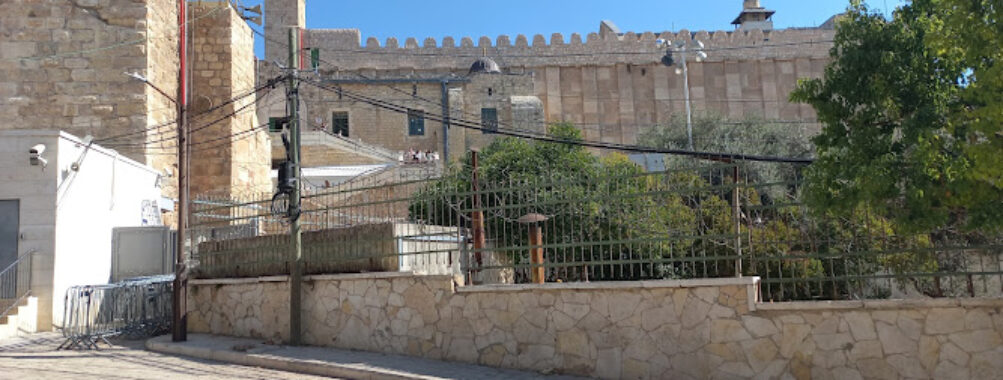
Hebron
## Description
Ah, Hebron – what a fascinating place that’s so often misunderstood. As one of the oldest continuously inhabited cities in the world, this remarkable Palestinian city has been a witness to thousands of years of human history. Y’know, I was honestly blown away when I first learned that people have been living here since around 3,000 BCE! The city pulses with both ancient history and modern life, with over 200,000 residents going about their daily routines amidst structures that have stood for centuries.
I gotta tell you about the Old City – it’s genuinely incredible. The heart of Hebron showcases stunning Mamluk-era architecture, with its characteristic limestone buildings and winding alleyways that’ll make any history buff’s heart skip a beat. And don’t even get me started on the traditional souks (markets) – they’re absolutely not your typical tourist trap, but rather authentic markets where locals have been trading for generations.
## Key Features
• The Ibrahimi Mosque/Cave of the Patriarchs – this massive complex is sacred to both Muslims and Jews, featuring stunning architecture from various historical periods
• The Old City (Al-Qasba) – characterized by traditional Palestinian architecture and bustling markets
• The Glass and Ceramic Quarter – where local artisans continue centuries-old crafting traditions
• The Old Souks – especially the covered Al-Qazzazin Market, famous for traditional handicrafts
• Traditional pottery workshops – showcasing the city’s renowned ceramic industry
• The Russian Monastery – a peaceful Orthodox Christian compound with beautiful gardens
• The ancient oak of Mamre – a historical site tied to Biblical traditions
## Best Time to Visit
Look, I’ve been around enough to know that timing can make or break your trip. The sweet spot for visiting Hebron is definitely during spring (March to May) or autumn (September to November). The weather’s just perfect then – warm but not scorching, with temperatures hovering between 20-25°C (68-77°F). Plus, you’ll catch either the spring blooms or the autumn harvest season, which adds an extra special touch to your experience.
Summer can be pretty intense with temperatures sometimes hitting 35°C (95°F), and winter can get surprisingly chilly with occasional snow – bet you didn’t expect that! I remember shivering through a January visit once, totally underprepared for the cold snap.
## How to Get There
Getting to Hebron is actually easier than most people think. From Jerusalem, you can hop on a regular service bus or shared taxi (called “servees” locally) from the main bus station. The journey takes about an hour, give or take, depending on traffic and checkpoint situations. If you’re coming from other Palestinian cities like Bethlehem or Ramallah, there are frequent bus connections throughout the day.
For those flying in, the nearest airport is Ben Gurion in Tel Aviv, though many travelers also use Queen Alia International Airport in Amman, Jordan. From either airport, you’ll need to arrange ground transportation to Hebron.
## Tips for Visiting
As someone who’s made their fair share of rookie mistakes while traveling, let me share some hard-earned wisdom. First off, dress modestly – this is important in any conservative city, but especially when visiting religious sites. Ladies, bring a scarf to cover your head when entering mosques.
Try to learn a few basic Arabic phrases – trust me, locals really appreciate the effort, even if you butcher the pronunciation (like I definitely did my first time). The word for “thank you” is “shukran” – that’ll come in handy!
Time your visit around prayer times if you want to see the Ibrahimi Mosque/Cave of Patriarchs, as access times vary. And please, please bring good walking shoes – the Old City’s streets are mostly cobblestone, and those stones can be pretty unforgiving on your feet after a few hours of exploration.
The markets are a bargainer’s paradise, but remember to be respectful – it’s not just about getting the lowest price, but about engaging in a cultural tradition. Speaking of shopping, don’t leave without trying some of the local olive oil or picking up some traditional pottery – these make fantastic souvenirs and help support local artisans.
Oh, and here’s a pro tip: carry cash! While some bigger shops might accept cards, most traditional markets and small vendors only deal in cash. The local currency is the Israeli Shekel, though some places might also accept US dollars or Jordanian dinars.
Lastly, and this is something I wish someone had told me earlier – take time to chat with the locals. Hebronites are known for their hospitality, and some of your most memorable experiences might just come from accepting an invitation for coffee or tea. The stories you’ll hear and the connections you’ll make will give you insights that no guidebook ever could.
Location
Places to Stay Near Hebron
Find and Book a Tour
Explore More Travel Guides
No reviews found! Be the first to review!